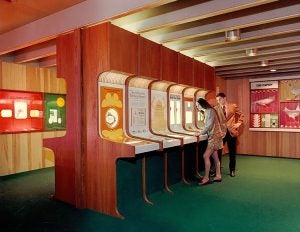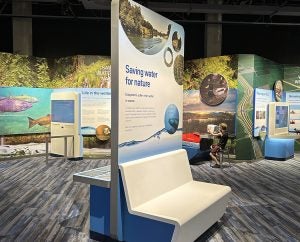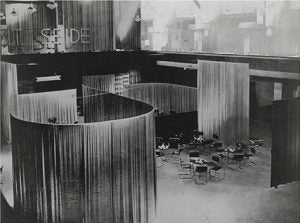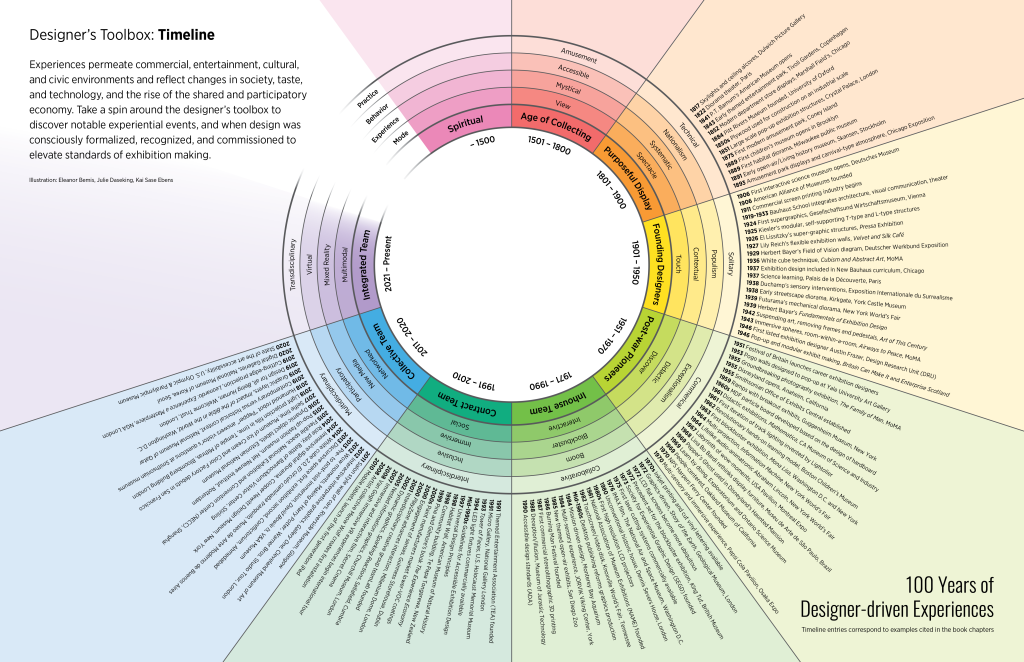This is a sampling of cases studies from the book. Additional historical and contemporary examples that illustrate the book’s methodology will be added in the future.
50 years – not much has changed

Ontario Science Center, 1969. © Ontario Science Center

SMUD Museum of Science and Curiosity, 2013
Both these examples share the book’s design tropes of form, atmosphere, staging, communication, and learning.
Still fashioning fabric forms

Velvet and Silk Café, Berlin, 1927. © The Museum of Modern Art/Licensed by SCALA / Art Resource, NY.

Mathematics: The Winton Gallery, 2012. © Science Museum London. Photograph by Luke Hayes.
The curved fabric walls in Lily Reich’s design for the Velvet and Silk Café offer a fabric form that anticipates the parabolic algorithms employed in the hanging structures by Zaha Hadid at London’s Science Museum.
